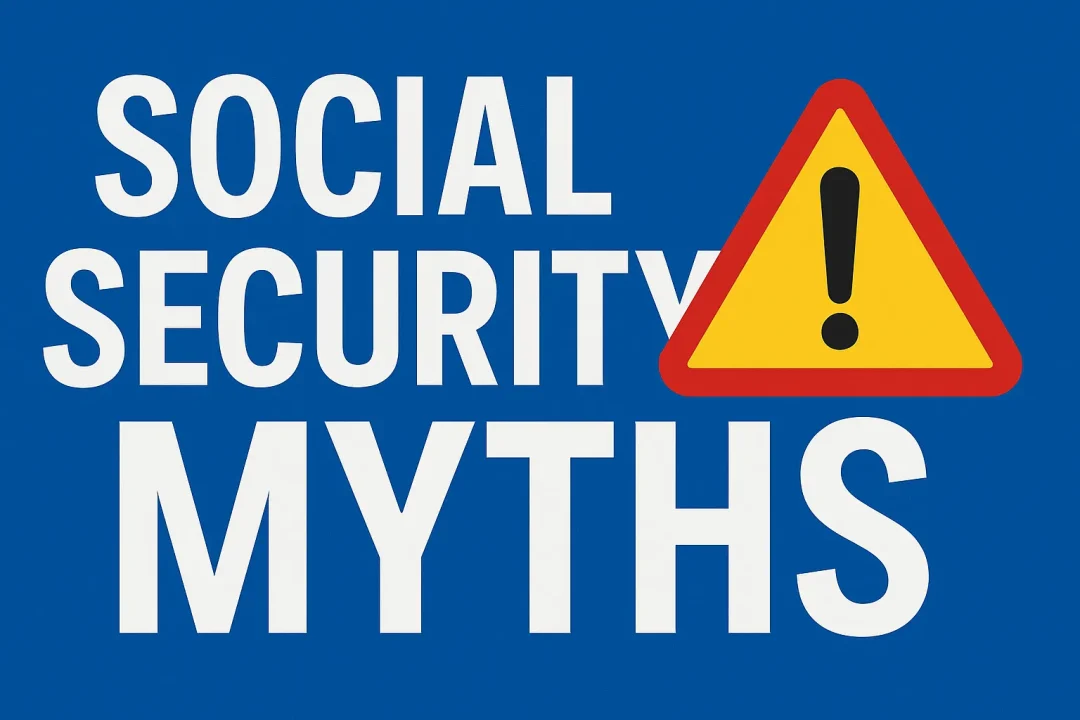As millions of Americans near retirement, myths and misinformation about Social Security threaten to upend their financial stability. Experts warn that believing the wrong things about how benefits work can lead to serious consequences — from reduced monthly checks to long-term income shortfalls.

Here are three of the most damaging Social Security myths to watch out for:
Myth #1: You Should Always Claim Benefits at Age 62
While age 62 is the earliest you can begin collecting Social Security, it’s not always the smartest move. Claiming early permanently reduces your monthly benefits — by up to 30% compared to waiting until your full retirement age (typically between 66 and 67).
Why It Matters:
- If you live into your 80s or beyond, the reduced payments can significantly shrink your total lifetime income.
- Delaying benefits until age 70 can increase your monthly payment by as much as 8% per year.
📊 Chart: Monthly Benefit Comparison by Claiming Age
(A bar graph comparing estimated monthly benefits at ages 62, 66/67, and 70.)
Myth #2: Social Security Will Disappear Before You Retire
Despite frequent headlines about the Social Security trust fund shortfall, the program is not going away. The latest Trustees Report projects that, even if Congress takes no action, Social Security will still be able to pay about 77% of benefits starting in the 2030s.
Reality Check:
- The trust fund may be depleted, but payroll taxes will continue to fund the majority of benefits.
- Lawmakers have historically acted to protect the program, and fixes — like raising the payroll tax cap — are on the table.
Myth #3: You Don’t Pay Taxes on Social Security
This myth trips up many retirees. Depending on your total income, a portion of your Social Security benefits may be subject to federal income taxes.
Here’s the breakdown:
- Individuals with combined income over $25,000 may pay taxes on up to 50% of their benefits.
- Couples filing jointly with more than $44,000 in combined income may owe taxes on up to 85%.
🧮 Tip:
Use the IRS worksheet or speak with a tax advisor to calculate your specific liability.
The Bottom Line
Falling for these myths can shrink your retirement income and put your financial future at risk. Instead of relying on hearsay or social media, check your personalized Social Security estimate at SSA.gov and talk with a retirement planner. Getting the facts now can mean thousands of dollars more in your pocket over time.
📌 RELATED READS:
- How Much Social Security Will You Get in 2026? COLA Predictions & More
- How to Enroll in Social Security Benefits: A Step-by-Step Guide
- Social Security Cuts: What Trump’s Plan Could Mean for Retirees
Stay informed and plan ahead. Social Security remains a lifeline for over 71 million Americans — knowing your payment dates and any upcoming changes is key to staying financially secure. If you’re unsure about your benefits or need personalized guidance, visit SSA.gov or call 1-800-772-1213.
